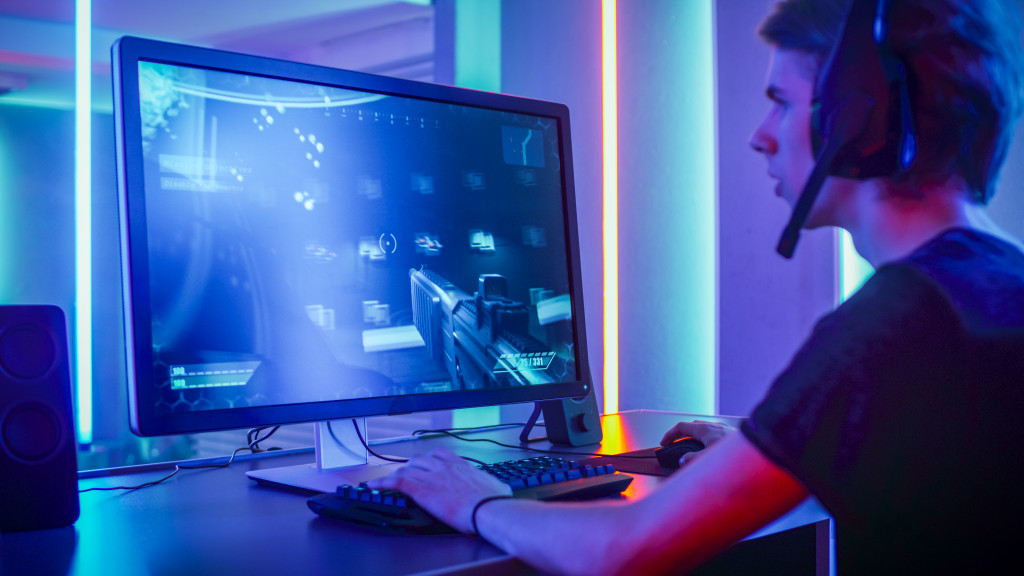Creating impressive 3D models for games can be both challenging and rewarding. With the right tools, techniques, and knowledge of 3D modeling basics, you can create stunning visuals that bring your game to life. Here are four tips to help you make the most of your 3D model creation.
1. Learn the Basics
Before delving into complex tasks such as creating a detailed character or environment, it’s important to understand the fundamentals of 3D modeling. This includes learning about polygons, meshes, textures, lighting, rigging, and more. Understanding these concepts will give you a solid foundation to build upon when creating anything from simple props to more intricate works of art. Additionally, having a firm grasp of the basics will make it easier to troubleshoot any problems you might encounter.
Once you understand the fundamentals well, it’s time to start creating your own 3D models. It’s essential to take things slowly at first, so you can get used to the various tools and techniques. Start by creating simple objects such as cubes or spheres and gradually work your way up to more complex shapes. This will help you understand how the different tools affect how your models look and behave.
In addition to creating shapes, it’s also necessary to learn how to apply textures and lighting. Textures allow you to give your models a realistic look, while lighting helps bring out the details and make them appear more lifelike. You’ll also need to learn how to use rigging and animation tools, which will allow you to bring your models to life.
2. Use Reference Images
Using reference images is integral to 3D model creation as it provides guidance when creating detailed objects or characters. Photos, drawings, sculptures, and other works of art can all inspire you and help you make more visually appealing models. Additionally, referencing real-world objects will give your 3D models a more realistic feel and help you replicate shapes, textures, and lighting in your virtual world.
For those just starting in 3D modeling, reference images can be invaluable. Reference images not only provide you with visual inspiration but also help to give insight into the complexities and nuances of various objects or characters. They can help guide the modeler when creating intricate details such as facial features, clothing textures, fabric folds, or the shapes and curves of an automotive vehicle. Additionally, reference images can offer guidance on lighting techniques so that the 3D model more accurately reflects its real-life counterpart.
In addition, reference images also provide a helpful point of comparison when assessing the accuracy of your work. After creating your 3D model, you can use the reference images to check for any discrepancies between your model and the original image. Once compared, you can make further tweaks and adjustments to ensure that your 3D model matches its real-world counterpart as closely as possible.
3. Iterate and Refine

As with any creative project, iteration and refinement are key components of successful 3D model creation. This means going back and making adjustments to existing models or creating entirely new ones based on feedback and testing results. Additionally, taking the time to iterate and refine your work can help bring out the best in any 3D model you create for your game.
Iteration and refinement should be done with the same attention to detail as when you first created the model. Take the time to look at the details of your 3D models, such as texture quality, lighting effects, and any other visual effects. Make adjustments or add new elements to bring out the best in your game’s visuals.
If you are working with a team, it can be helpful to discuss the changes and improvements needed. Everyone in the group should have their input taken into consideration since each person has a unique perspective and insight on how to make the 3D models better. After making changes or adjustments, test them out in a real-world scenario to see how they will look and feel. This will give you an idea of what needs further refinement before the 3D model is complete.
4. Outsource Your Design Work
When creating complex 3D models, it may be beneficial to outsource some work to a professional designer. This is especially true if you are on a tight timeline and don’t have time to create everything yourself. A good designer can take your vision and turn it into reality without taking away from the overall quality of your game.
A professional designer can also help reduce the amount of time and energy you spend on each project. By outsourcing your design work, you can focus on other tasks that require your attention. You’ll be able to utilize your resources better, meaning you won’t have to spend long hours working on a single model or animation. Additionally, hiring a 3D modeling outsourcing company can provide you with access to experienced designers with a proven track record of delivering quality results.
The cost of enlisting a professional designer’s help depends on your project’s complexity and scope. However, it is usually cheaper in the long run than trying to do all the work yourself. When you outsource design work, you can expect to receive high-quality results promptly.

In Summary
Creating impressive 3D models for games can be a rewarding experience if done correctly. If you apply these four strategies, you can build awe-inspiring visuals that make your game one of a kind. With enough practice and dedication, you’ll soon develop the skills needed to produce truly remarkable 3D models for your game!
